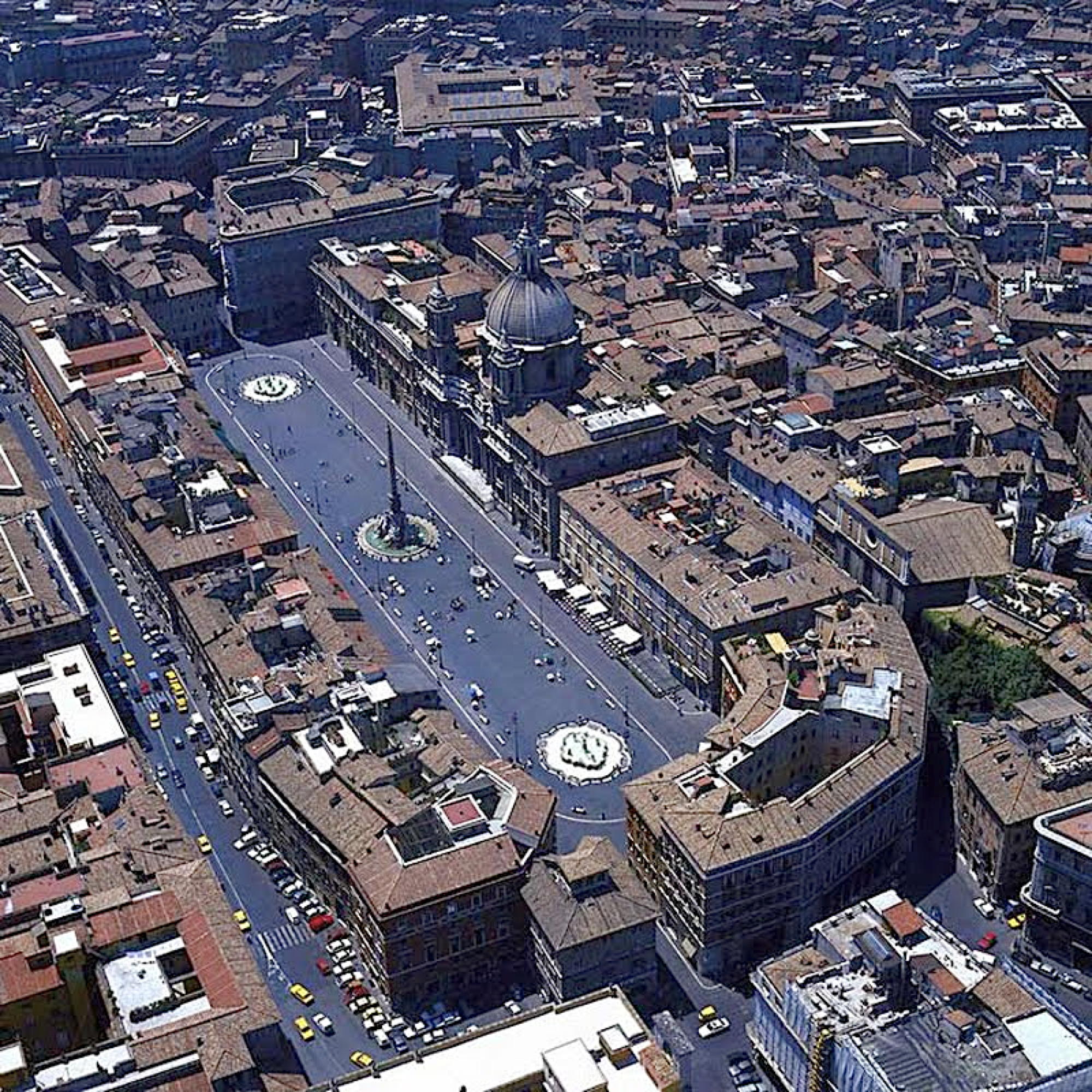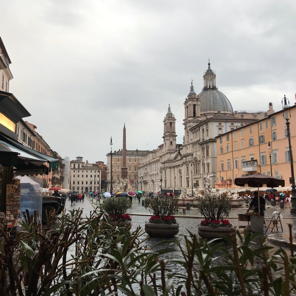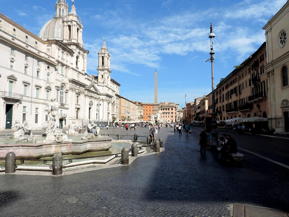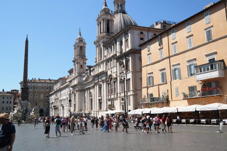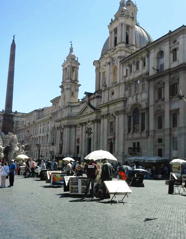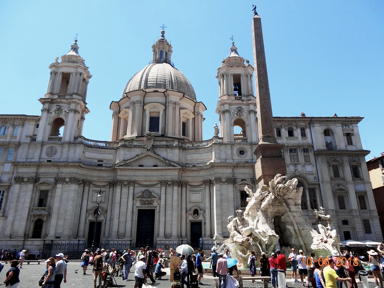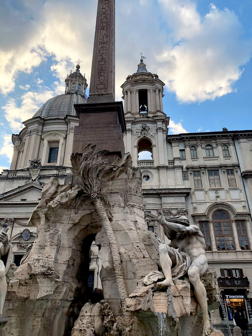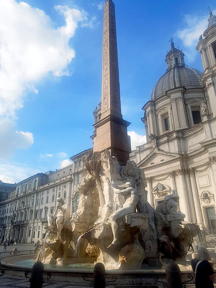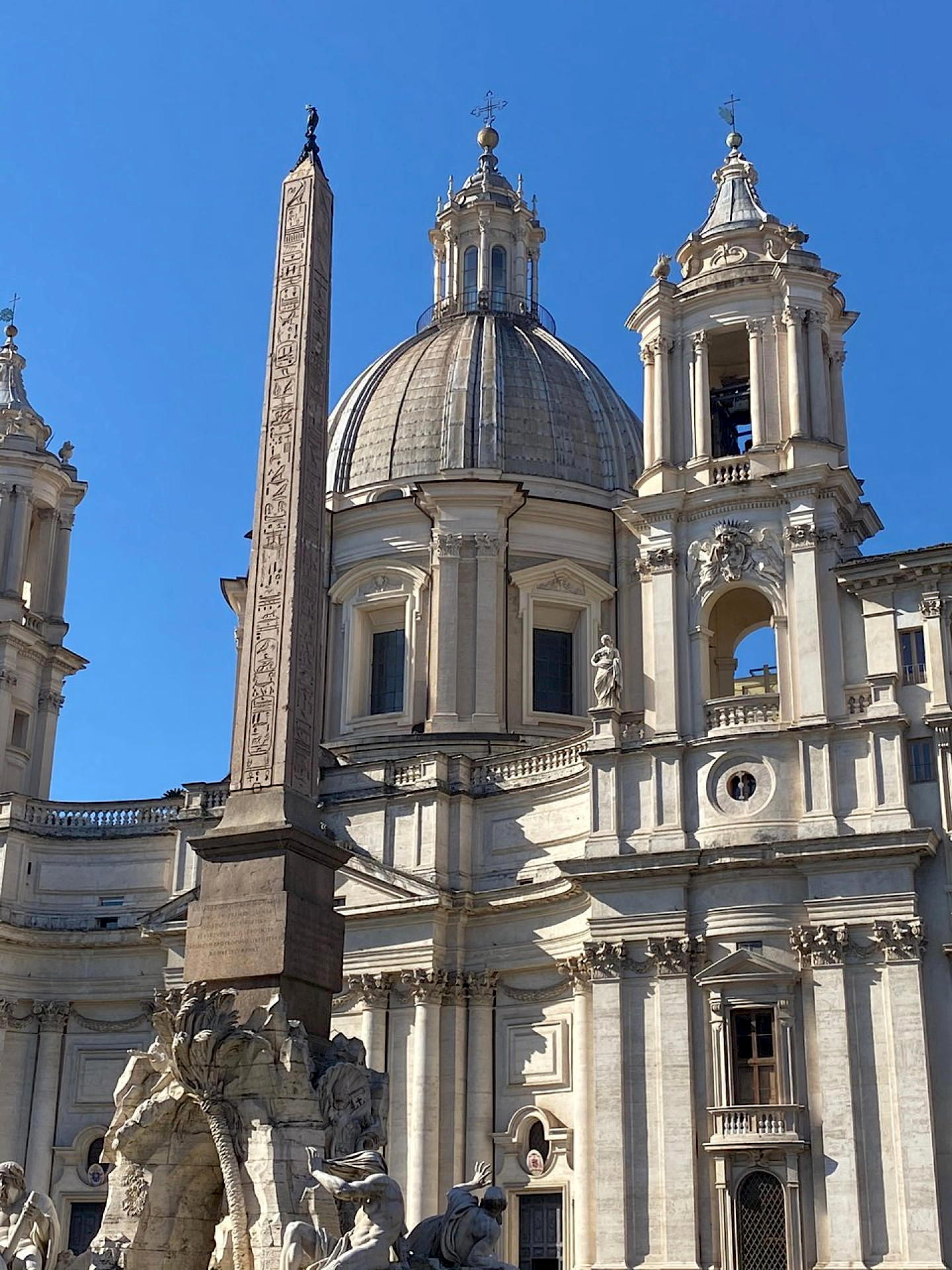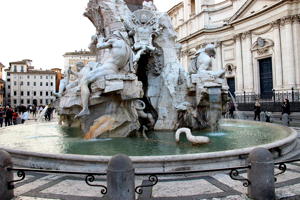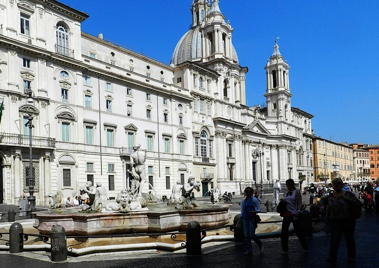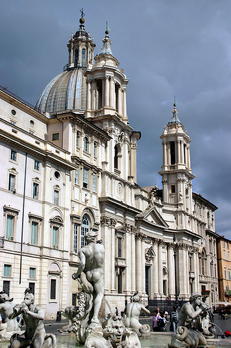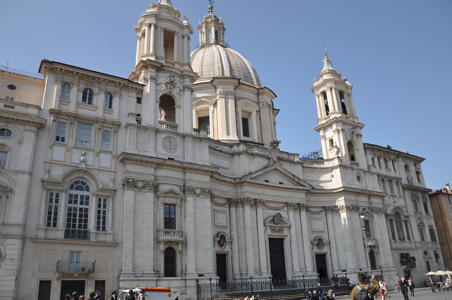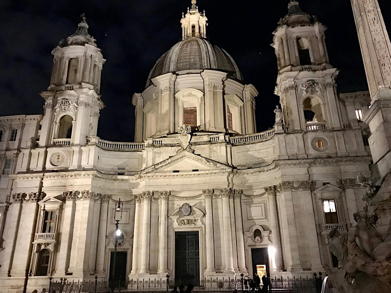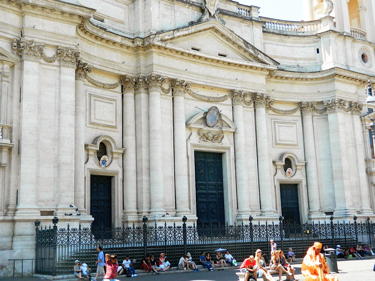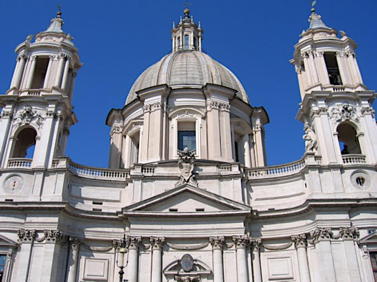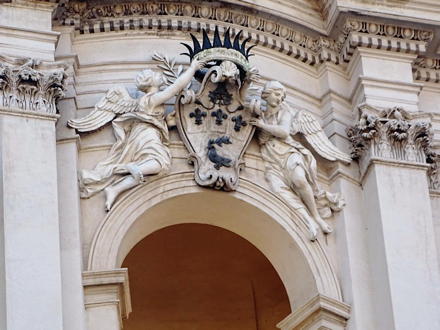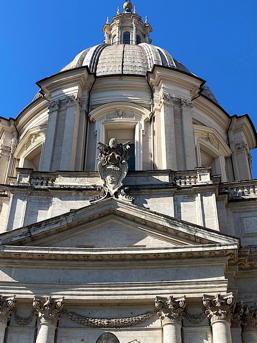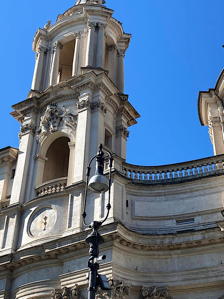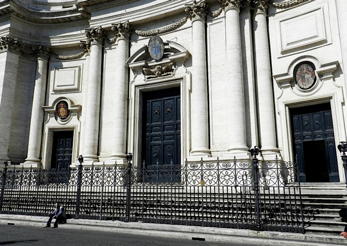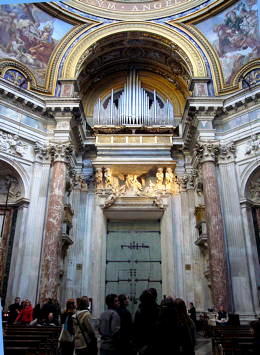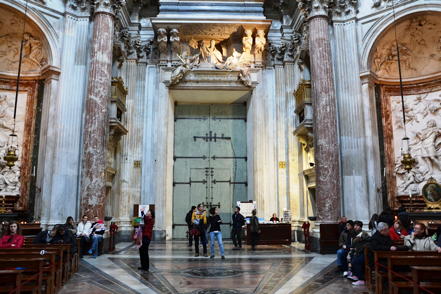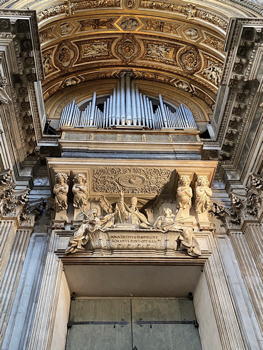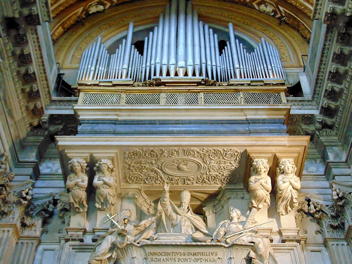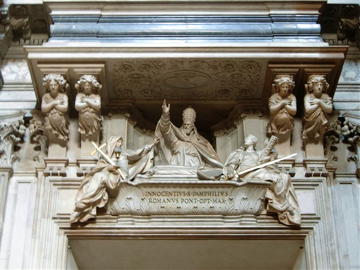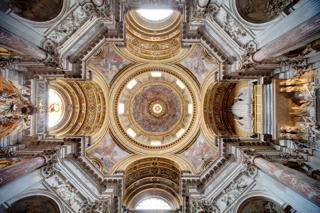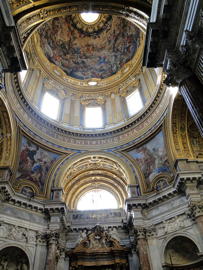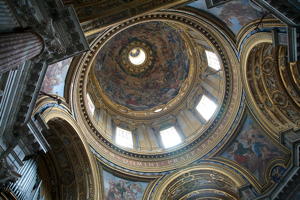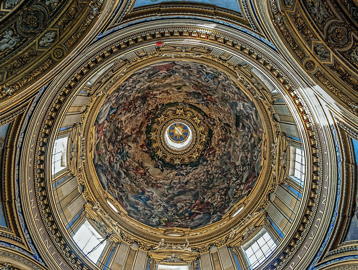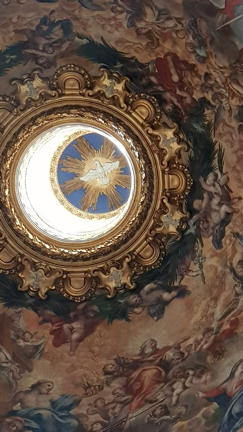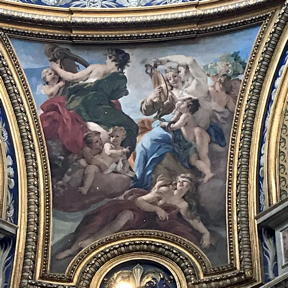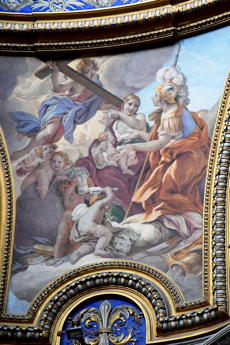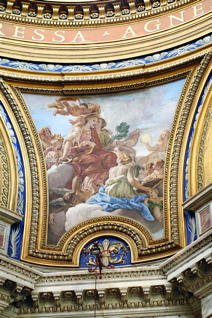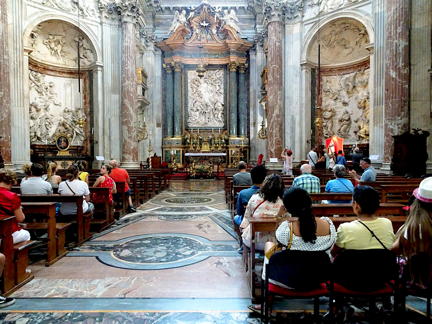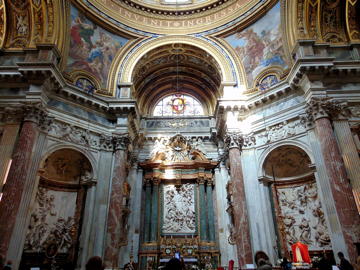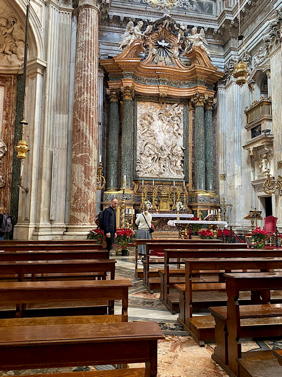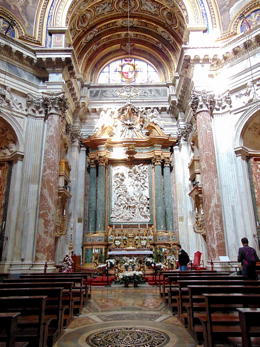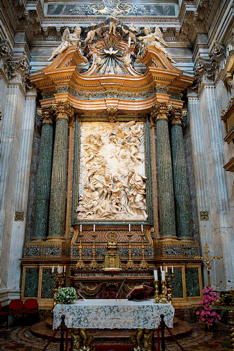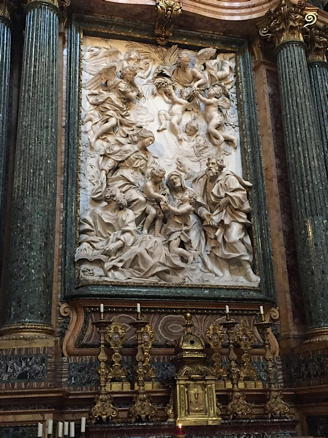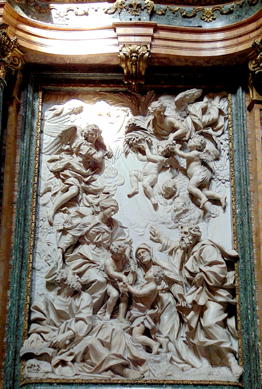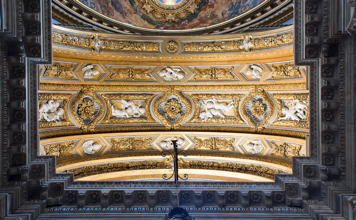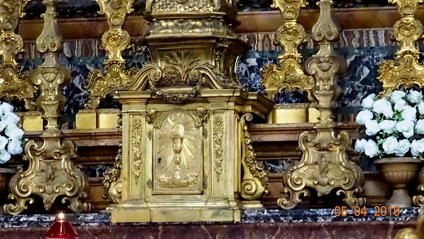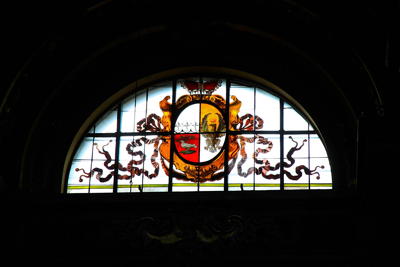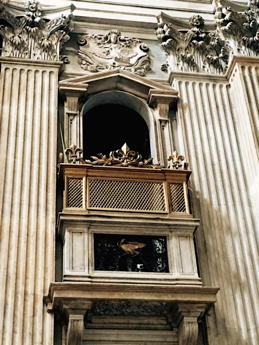Sant'Agnese in Agone is a 17th-century Baroque church. It faces onto the
Piazza Navona, one of the main urban spaces in the historic center of the city and the site where the Early Christian
Saint Agnes was martyred in the ancient Stadium of Domitian.
For reference, a plan of the church is available
here.
An oratory dedicated to St Agnes was built here, probably in the 8th century. It stood on the spot where she was martyred, in 304 A.D., over a brothel in the arcades of Circus of Domitian.
In the mid-15th century part of the Pamphilj (or Pamphili) family bought a small house on Piazza Navona which was later merged with some neighboring buildings in order to build a palace. In 1644 a member of the family was elected pope, taking the name of Innocent X. Early in his reign the family built a palazzo next to the church. Then the pope decided to rebuild the church as the mortuary chapel of the palazzo.
The first proposed design was by Girolamo Rainaldi, and his son Carlo. However, the design was publicly criticized and the pope was not happy with it, so he gave the commission to Francesco Borromini in 1653. Borromini redesigned the façade, but had to maintain the interior essentially the way the Rainaldis had developed, with some changes. Borromini resigned in 1657, and Carlo Rainaldi took over again. In 1666 Gian Lorenzo Bernini was commissioned to finish the church.
The original main altar was replaced by the present one in 1724. Unusually for a church, this altar is not dedicated to the patron but to St John the Baptist. In 1859 the church was restored by Andrea Busiri Vici.
